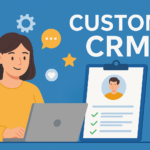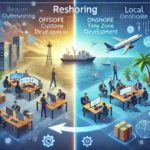Navigating the Challenges of Legacy Software Support
Common Legacy Software Challenges and How To Navigate Them
In December 2022, Southwest Airlines canceled 16,000 flights in ten days due to a significant IT crash. This “technical debt” cost the carrier over $1 billion, leaving almost 3 million passengers stranded over the holidays. Like so many major corporations, Southwest was running on outdated software.
The reliance on legacy software is surprisingly common, even in critical industries like finance and healthcare. Hospitals, banks, and government agencies are notorious for refusing to retire dinosaur systems and rely considerably on legacy software support. Unfortunately, “Just replace it” is easier said than done.
Upgrading a company’s entire technical department is expensive and time-consuming. Even companies with private funding can quickly fall behind on software updates due to exorbitant costs. However, using software past its prime can be even more costly. Today, we discuss some of the most common risks of using legacy software and how to offset them through system modernization.
The Biggest Problems With Legacy Software
Why modernize legacy systems if they still work? The truth is that outdated technology can quickly become a liability for your business.
- Costly maintenance – constantly repairing bugs and broken software becomes expensive. Deloitte names challenges with technology infrastructure as the top reason companies missed their cost-reduction targets in 2024.
- Productivity decline – old software offers limited integration with new systems, which can force employees to find time-consuming workarounds to simple problems. Software crashes and downtime also harm productivity.
- Security breaches – a lapse in software updates can create vulnerabilities in your system that expose you to malicious malware and increases your risk of data breaches. Such events can lead to costly lawsuits and regulatory compliance issues.
- Reputational damage – negative user experience due to outdated or slow software can turn clients and potential employees away. This puts you at a competitive disadvantage that can hinder your growth.
Three Ways to Keep Legacy Software Viable
Investing in legacy software support ensures system health and security compliance for older technology. It provides solutions for common issues legacy software users experience. It helps you cultivate a future-forward mindset for your business.
1. Conduct Regular Software Audits
Auditing your software systems involves reviewing all the programs and apps you use to determine where upgrades may be needed. You can take this further by combing through the code to identify bugs and security threats. It’s also worth checking that your software complies with your industry’s latest privacy regulations.
2. Modernize Legacy Systems
Modernizing legacy systems means enhancing them with updated code to improve their performance and security. It is a practical and cost-effective alternative to replacing the entire program and starting from scratch with something new. The goal is to extend the lifespan of your existing software and bring it up to modern standards – explore other benefits below.
- Increased data security
- More scalable architecture
- Faster maintenance and fixes
- Integration with third-party apps
- Improved user experience
- Expanded functionality
- Increased productivity
- Higher storage capacity
As far as legacy system modernization approaches go, each developer is different. The route you take for your project will depend on the type of software you’re using and the outcomes you want to achieve within a specific timeframe. The following software modernization methods can be deployed independently or as a combined strategy.
- Refactoring – restructuring your software’s existing code to remove unnecessary, non-functional components that clutter your system and reduce performance.
- Data migration– migrate data from one platform to another using a legacy system data transfer. For modern startups, this might mean moving everything to the cloud or a SaaS platform. Transferring data from a legacy system helps you prepare for future upgrades.
- Containerization – developers can use tools like Kubernetes or Docker to package legacy software applications and all the background code they need to run in simple, lightweight containers that can speed up your system.
- Creating APIs – build middle-man software that allows your legacy system to communicate with newer programs and integrate modern features into your workflow without developing a brand-new application.
- Rebuilding – creating custom software with the same features as your legacy system using modern programming languages. This can also include expansions and upgrades.
3. Invest in Training and Education
Legacy software support must include ongoing learning for your employees. As software ages, new hires and customers are less likely to know how to use it. Education and training are essential to continue operating at maximum productivity while working with older software.
The Value of Ongoing Legacy Software Support
Just because software is outdated doesn’t automatically mean you must replace it. As we’ve seen with banks and government agencies, organizations can keep growing even with older software—provided they conduct regular security audits and maintenance.
You could consider partnering with a third-party developer if this approach suits you. This will help you keep a regular maintenance schedule and gain access to the latest security information and updates. Zelifcam is a trusted legacy software support provider based in Texas. We believe that modernizing legacy systems offers incredible opportunities for growth and innovation.
For more information about our services or to book a call with us, please get in touch.
SOURCES:
- https://iscap.us/proceedings/2023/pdf/5907.pdf
- https://cybernews.com/editorial/technical-debt-southwest-airlines-software/
- https://www2.deloitte.com/us/en/pages/mergers-and-acquisitions/articles/margin-improvement-and-technology-enabled-transformation-strategy.html
- https://www.zartis.com/5-steps-to-successful-software-modernization/
- https://www.mndwrk.com/blog/10-tools-and-techniques-for-modernizing-legacy-software-systems





